Spodumene – Mineral Properties, Photos and Occurrence
Spodumene is an uncommon lithium silicate and one of the precious lithium ores. It produces nice crystals as well as popular and colorful gem material.
Crystal Structure of Spodumene
Spodumene LiAlSi2O6 is a monoclinic silicate, which belongs to the clinopyroxenes. It is the only lithium pyroxene and does not create solid solutions with other pyroxenes. The natural occurring α-spodumene irreversibly changes to β-spodumene above ~1080°C.
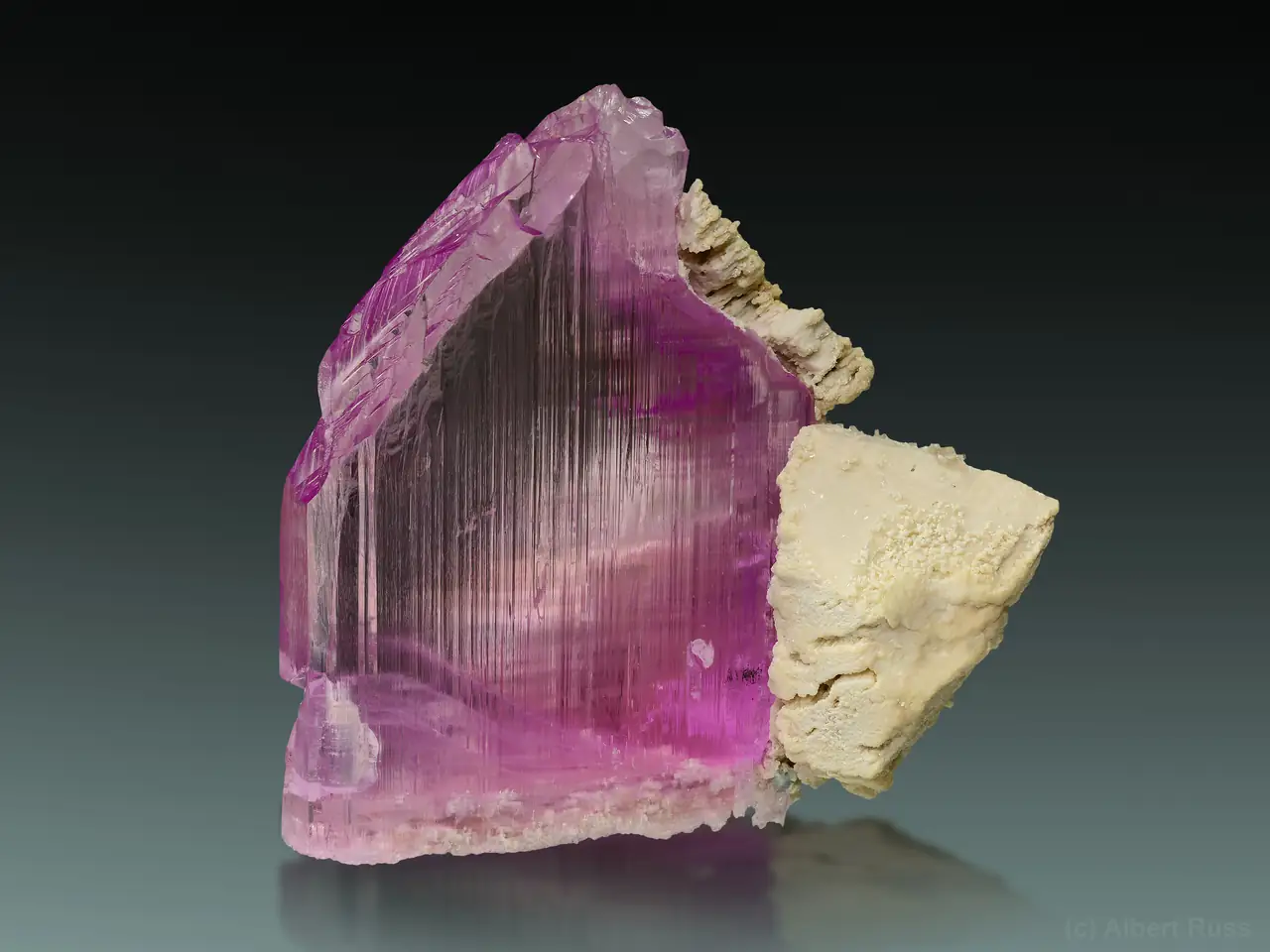
The trace amounts of Mn, Fe, and Cr3+ are often present in the structure and cause color changes. Other common impurities include Mg, Ca, Na, K, and water.
Spodumene forms elongated or columnar crystals, usually with vertical striation. Gem quality crystals are often etched. Crystals may reach enormous size, huge crystals over 14 m long were reported from Etta Mine in the Black Hills, South Dakota, USA.
Physical Properties of Spodumene
Pure spodumene is colorless, but most occurs as white or pale gray. Colorful varietes range from pale to dark hues of yellow, pink, purple, and green. Streak is white. Spodumene is translucent to transparent with vitreous or dull luster. It is strongly pleochroic, with strongest pleochroism usually visible on short terminations.
It is quite hard, registering 6.5-7 on Mohs scale. It is brittle with perfect cleavage on (110), (110) and parting on {100}, {010}. It has irregular or uneven to sub-conchoidal fracture. Spodumene density is 3.1-3.2 g/cm3.
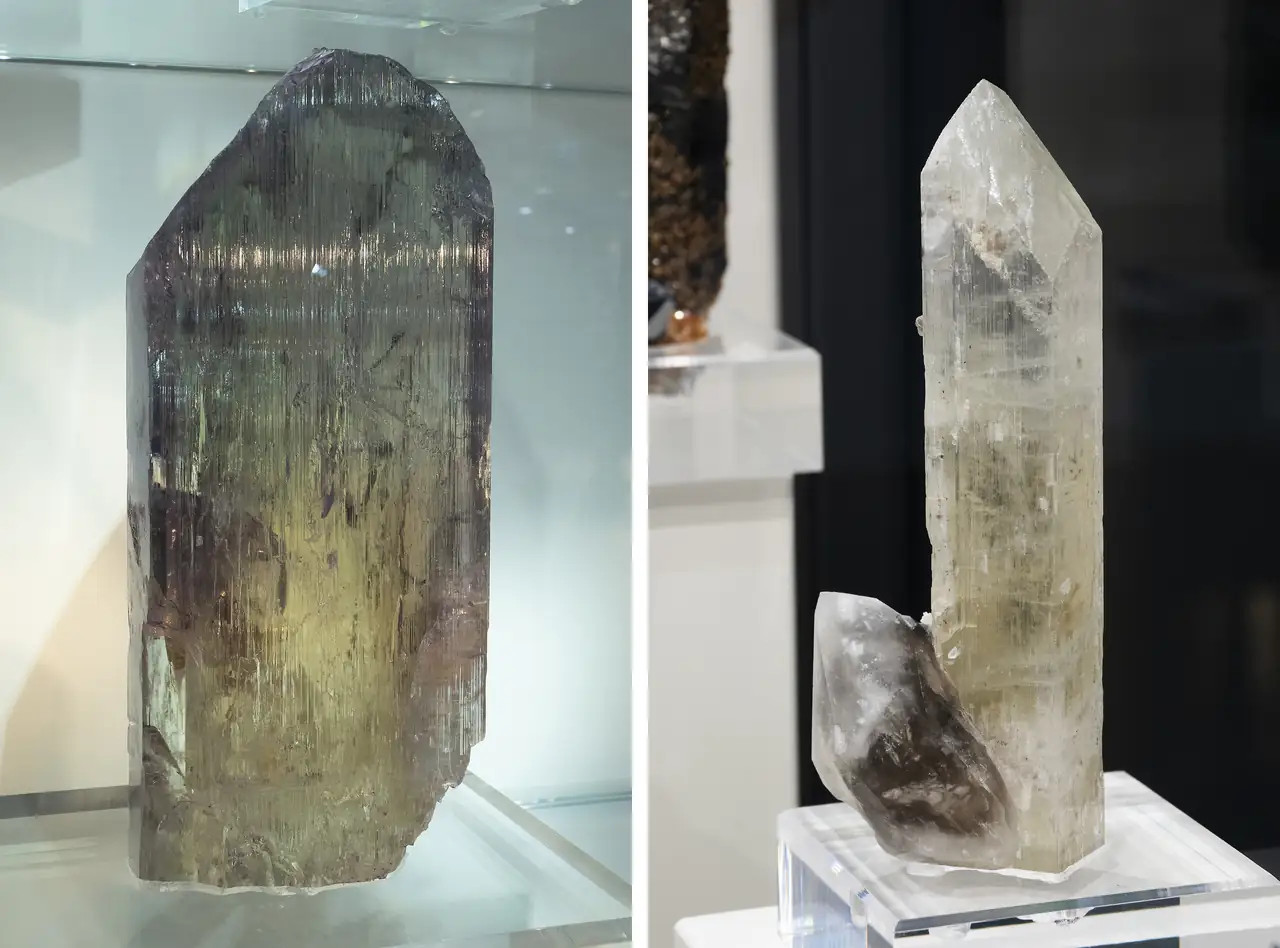
Spodumene is usually fluorescent in the both long-wave (pink) and short-wave (blue-pink) UV light. Some spodumenes are also phosphorescent and glow bright orange or red for several seconds up to minutes after UV light exposure. Beware that UV light might cause the color change of spodumene (see below)!
Tenebrescence and Color Changes of Spodumene
The term tenebrescence describes the ability of a mineral to reversibly change its color. The color changes in spodumene are both reversible and irreversible, depending on its impurities (like Mn or Fe) and its origin.
Many miners reference finds of pale blue, blue-green, blue-purple or dark green spodumene crystals which change its color to common pink in the sunlight within hours, sometimes even minutes! These changes are often not reversible, and crystals must be kept in the dark.
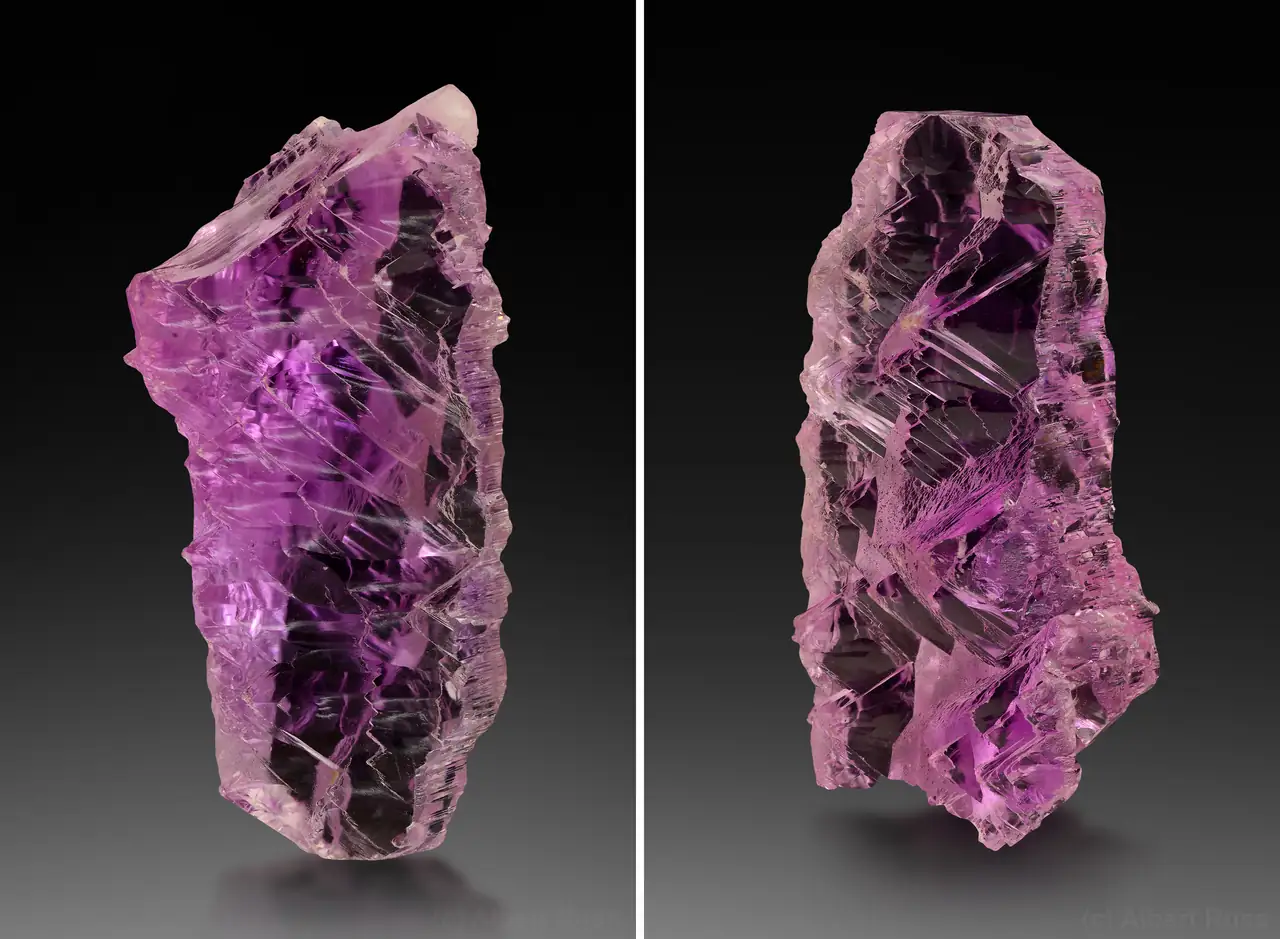
However, some colorless or pale pink spodumenes can change its color to saturated pink or purple by irradiation (gamma or X-rays). The Mn2+ in the structure gets oxidized to Mn3+ and changes the color. Further irradiation affects also the Fe3+, and the spodumene becomes green:
Mn3+ + Fe3+ + irradiation => Mn4+ + Fe2+
These color changes, caused by irradiation, can be reverted by heating to several hundred degrees of Celsius or exposure to daylight or UV light. Extended light exposure or heating might bleach spodumene to pale or colorless. The color can be restored again by irradiation.
Some natural dark green spodumene (hiddenite) is colored by Cr3+, which cannot be oxidized by irradiation, and thus its color is stable.
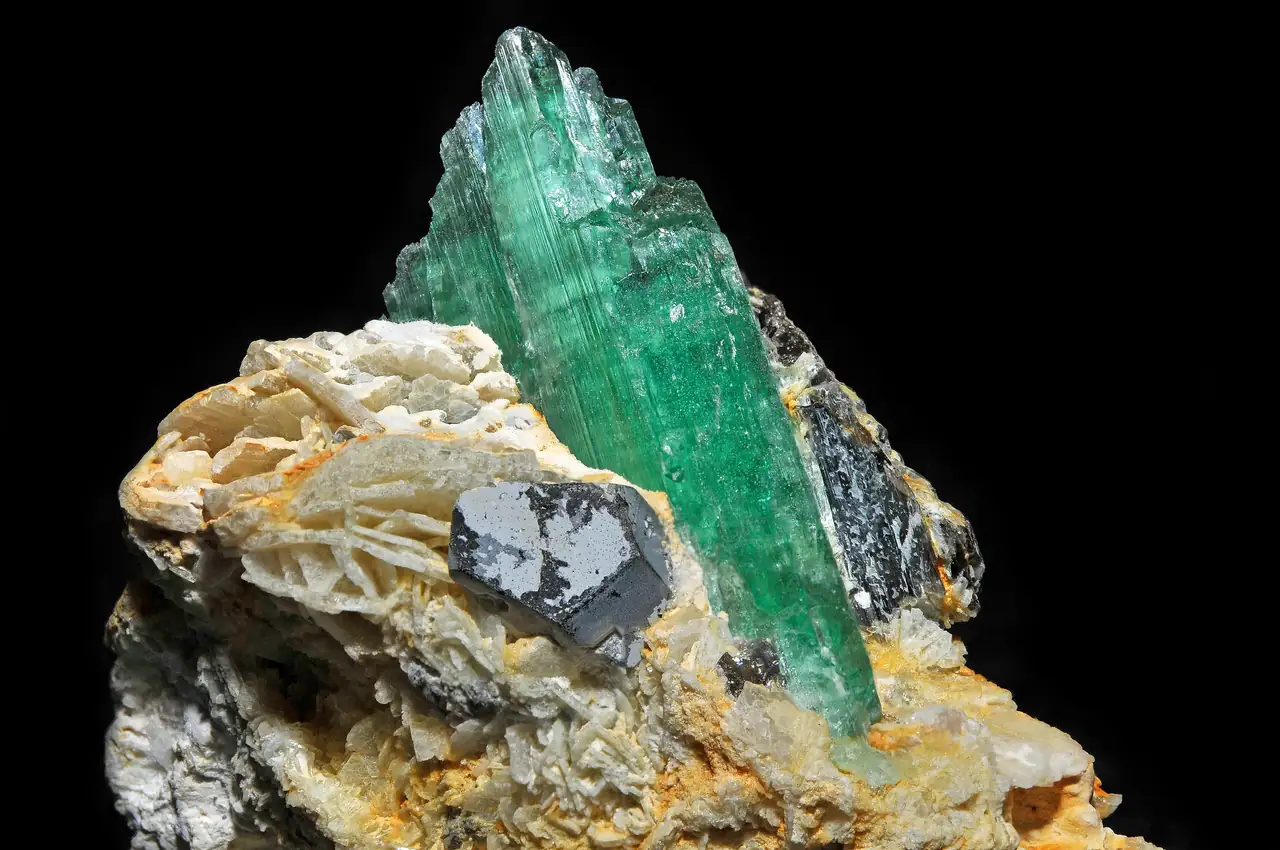
There are also artificially irradiated spodumenes, which underwent heavy irradiation, and have unnatural strong yellow to orange-yellow color. Some of these were slightly radioactive.
Naming and Discovery
Spodumene was first described from Utö, Haninge, Stockholm County, Sweden in 1800 by Brazilian naturalist Jose Bonifacio de Andrada e Silva. The name is derived from the Greek spodumenos, which means “burnt to ashes”.

Ironically, despite the knowledge of spodumene, lithium was discovered by Johan August Arfwedson much later in 1817. And he found it in petalite from the same type locality as spodumene.
Varietes
The various colors of spodumene are obvious reason to have some named varieties. There are some discrepancies regarding the exact definitions, but three colored varieties are recognized:
- Kunzite - The most widespread and popular pink to pink-purple colored spodumene. Color is caused by the presence of Mn3+. Named in the honor of George Frederick Kunz, famous jeweler, and mineral collector.
- Hiddenite - Pale to dark green spodumene. This variety is colored by Cr3+ (stable color) or Fe2+ (unstable color). Some consider only chromium variety to be a true hiddenite. Named in the honor of William Earl Hidden, mining engineer, mineral collector, and mineral dealer.
- Triphane - Yellow to golden colored spodumene. However, this varietal name is also used as a spodumene synonym in general.
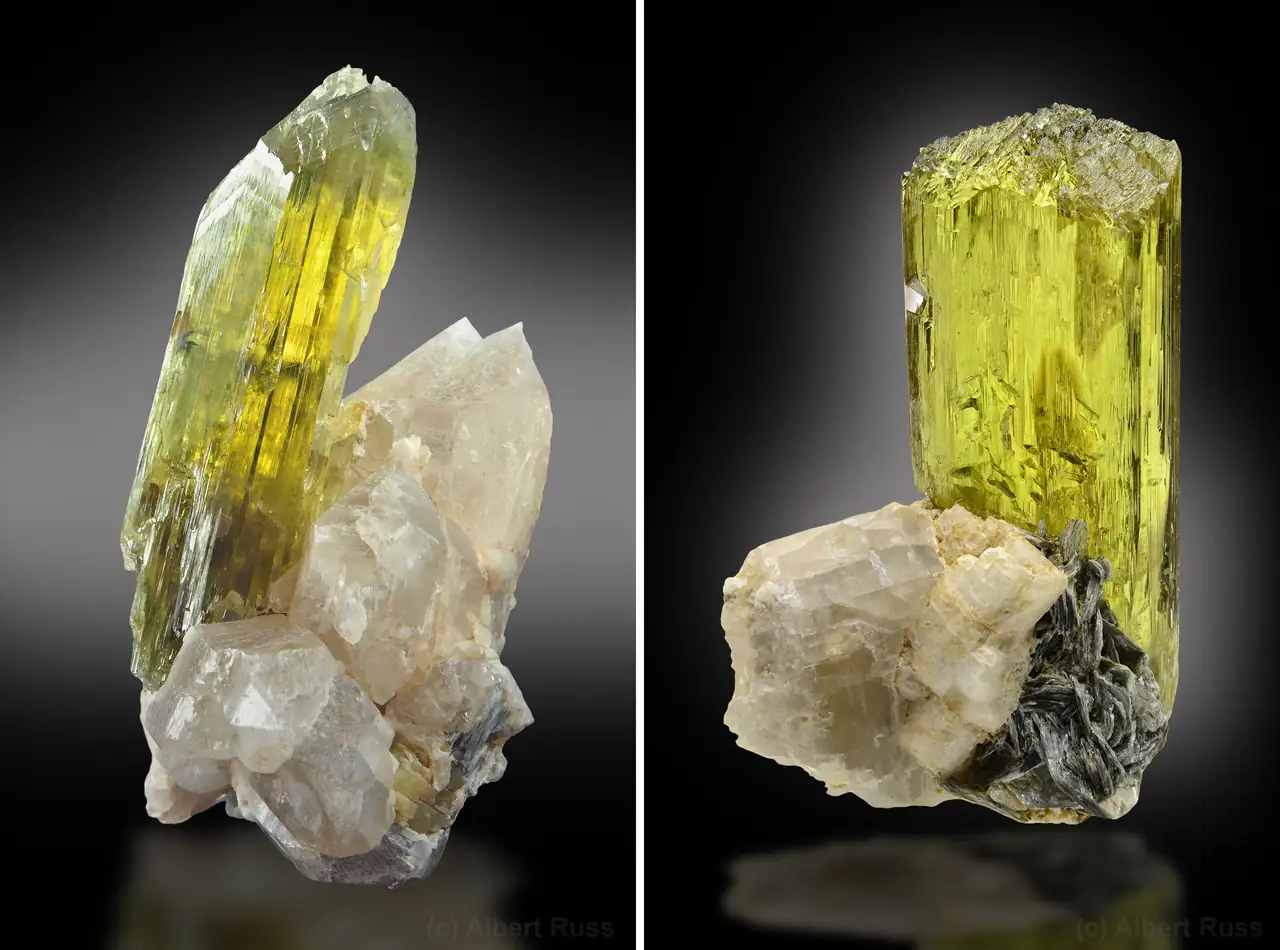
Associated minerals
Spodumene is very often associated with quartz, lithium tourmalines (mostly elbaite or fluor-elbaite), lepidolite, muscovite, albite (or its variety cleavelandite), eucryptite, and unspecified clay minerals.
Origin
Spodumene formation is limited to the inner units of lithium rich pegmatites, namely because it needs very high concentration of lithium. Spodumene can form several generations within one pegmatite, both magmatic and hydrothermal.
Common spodumene is pale colored and forms crystals inside the blocky unit. These might be hard to recognize, especially when they do not form typical elongated crystals. These crystals in the blocky unit crystallize from the silicate melt.
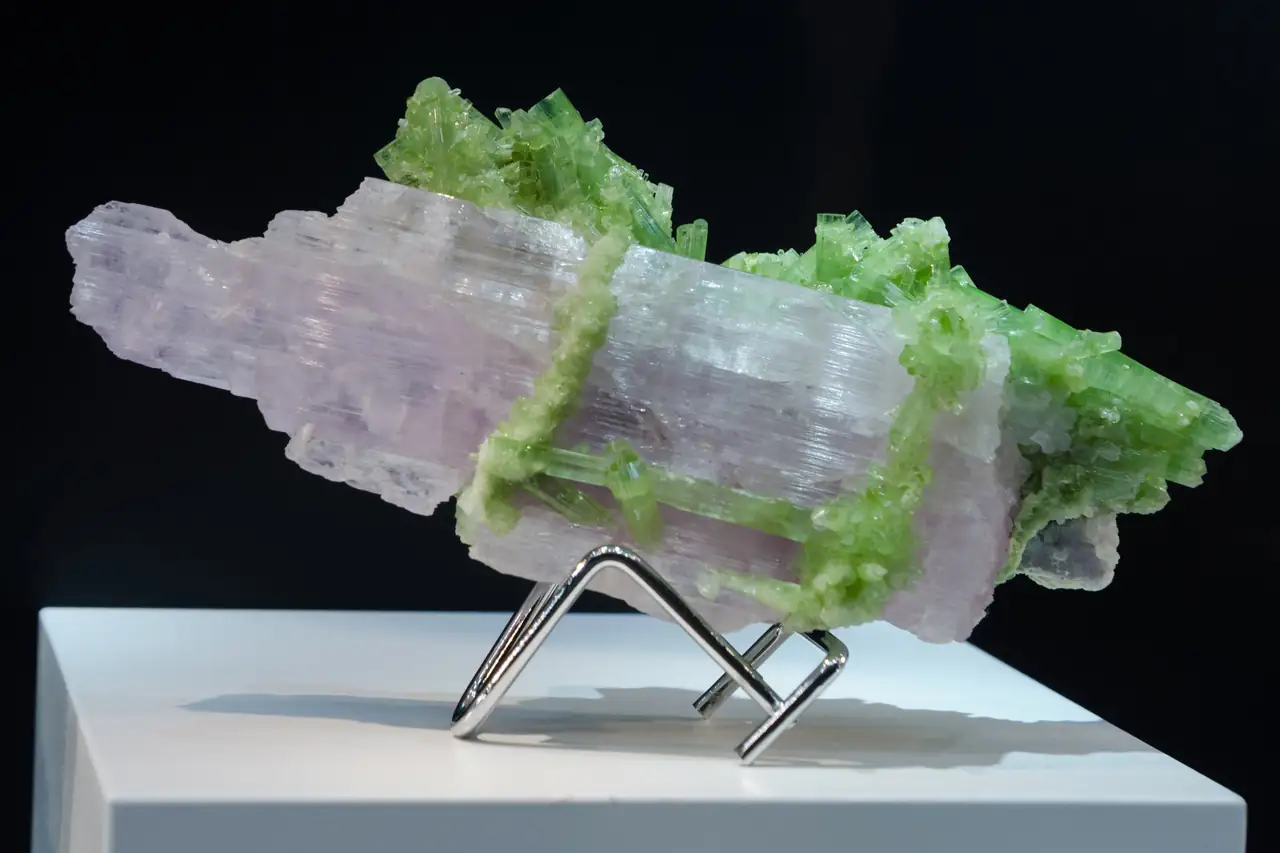
Gemmy spodumene crystals usually occur inside the core or pocket units. These are very often etched, perfectly shaped crystals of gemmy spodumene are less common. The etching of crystals is produced by the late subsolidus alterations, caused by the transition from magmatic to hydrothermal stage during pegmatite cooling.
Sometimes, the crystals are stuck in the soft clays, micas, or fine-grained altered mixture. Unfortunately, nice matrix specimens are often not preserved. Another reason is the miners, which often just harvest gem material and destroy potential nice collector’s specimens.
Uses of Spodumene
Colorful gemmy spodumenes are very popular faceting material. Nice crystals are also popular among mineral collectors and high-quality specimens are very expensive. Unfortunately, spodumene has perfect cleavage, and just a minor hit can easily split the gem.
However, the spodumene is also very important ore of lithium. Processing spodumene requires high temperatures (converting to β-spodumene), which is more demanding than processing lithium brines. On the other hand, processing spodumene is still way easier and cheaper than processing lithium rich micas like lepidolite or zinnwaldite.

The lithium is currently critical metal for the green energy and roughly 80% of lithium is used for battery production. This includes cellphones, laptops, electric vehicles (EV) and numerous electric tools and gadgets. The lithium is currently produced from lithium rich brines, lithium clays and spodumene in pegmatites.
The remaining 20% of lithium usage includes special ceramics, fluxing agents, grease, and pharmacy.
Occurrence
The occurrence of spodumene is limited to lithium-rich (LCT) pegmatites. There are two types of important deposits, which often do not overlap: resources of industrial lithium ore spodumene and resources of gem quality spodumene.
The huge industrial deposits include Greenbushes, Pilgangoora, and Earl Gray in Western Australia; Whabouchi Lithium Mine in Quebec, Canada; Goulamina Lithium Mine in Mali; and Manono, Tanganyika Province, Democratic Republic of Congo (DRC).

On the other hand, majority of gem quality spodumene (mostly kunzite) is produced from pegmatites in Konar Valley, Paprok, Nuristan Province, and from the Mawi and Darra-i-Pech pegmatites, Laghman Province, Afghanistan. Other major pegmatites are in Doce Valley, Minas Geraís, Brazil; and Sahatany Valley in Madagascar.
There are numerous famous spodumene bearing pegmatites across US: numerous pegmatites in Pala District, San Diego Co., California; Newry, Oxford Co., Maine; Branchville, Fairfield Co. and Strickland Quarry, Portland, Middlesex Co., both in Connecticut.
The only source of true hiddenite (Cr3+ colored) is Alexander Co., North Carolina, USA. Other green spodumenes (Fe2+ colored) are produced at numerous places worldwide.
References
- Isotani S., Fujii A., Antonini R., Pontuschka W. M., Rabani S. R., Furtado D. W. W. (1991): Optical absorption study of radiation and thermal effects in Brazilian samples of spodumene. An. Acad. Bras. Cie., 63, 127-139.
- Ito A. S., Isotani S. (1991): Heating effects on the optical absorption spectra of irradiated, natural spodumene. Rad. Effects and Defects in Solids, 116, 307-314.
- Palache, C., Davidson, S. C., and Goranson, E. A. (1930). The Hiddenite deposit in Alexander County, N. Carolina. American Mineralogist, 15, 280.
- Schwartz, G. (1928): The Black Hills Mineral Region. American Mineralogist, 13, 56–63.
- Souza S. O., Ferraz G. M., Watanabe S. (2004): Effects of Mn and Fe impurities on the TL and EPR properties of artificial spodumene polycrystals under irradiation. Nucl. Instr. and Meth., 218, 259-263.
- Souza S. O., Lima A. F, Lalic M. V. (2009): Optical properties of alpha spodumene: Orientation of its principal optical axes. Journal of Physics, Conference Series (Online), 167, n. 012066.





Comments